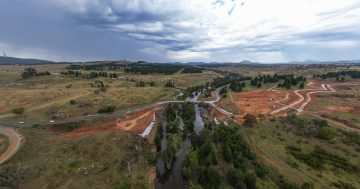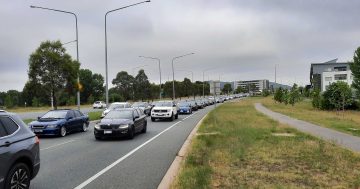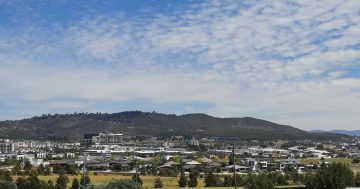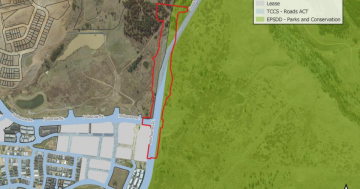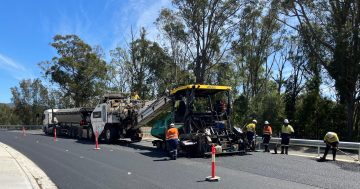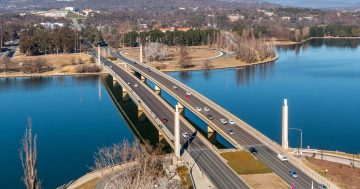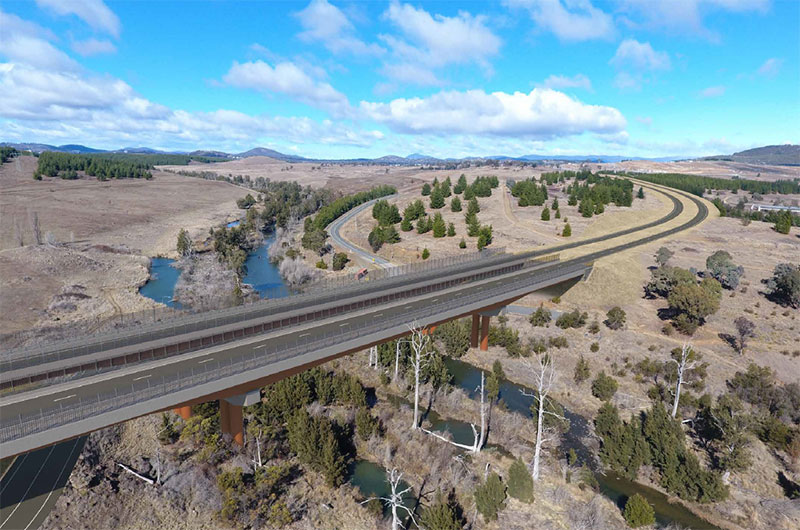
Critical project: An artist’s impression of the Molonglo River Bridge. Photo: ACT Government.
The cost of the long-awaited Molonglo River Bridge has now topped $200 million as the cost of construction materials soar.
Transport and City Services Minister Chris Steel told a Budget Estimates hearing that the cost of the project had grown from $175 million to 201 million and the budget had allocated a further $50 million to cover the increases.
TCCS official Sophie Clement said there had been an escalation across the market over the past 18 to 24 months in the price of road-making materials such as gravel and bitumen (25-28 per cent), asphalt and concrete bridge decks (10-15 per cent) and steel reinforcing (67 per cent) due to global instability issues and higher demand.
Mr Steel said the big increase in the price of steel had impacted the Molonglo Bridge project, a large portion of which would be made of steel.
But he was quick to refute any suggestion that the project, which will replace the unsustainable Coppins Crossing Bridge and provide a safe and much faster connection between the developing Molonglo Valley suburbs and Belconnen and the City, would be put on hold or delayed.
He said the bridge was a critical project to connect the northern and southern sides of Molonglo.
“There is already considerable congestion, in the Cotter Road in particular, and so this is really important to provide that connection on the northern end through to the City,” he said.
Mr Steel said it would also enhance active travel and public transport, including the extension of another Rapid bus route as well as the current R10.
He said projects such as these were not just road transport projects but provided multiple benefits, particularly for people living in the new suburbs.
A government spokesperson said the new cost was still within the $250 million figure projected in the ACT Infrastructure Plan 2019, and the bridge was still expected to open in 2025
The Molonglo River Bridge will solve the reliability problem of Coppins Crossing, which suffers from flooding and cuts the Molonglo suburbs off from Belconnen, causing many to make long diversions via William Hovell Drive and the Tuggeranong Parkway.
The double-lane connection will also be much safer than the current winding, single-lane road that was the scene of a horrific triple fatality in October last year.












